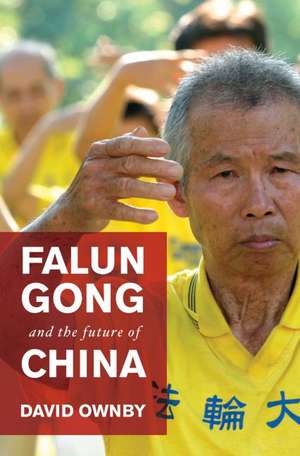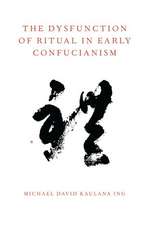Falun Gong and the Future of China
Autor David Ownbyen Limba Engleză Hardback – 24 apr 2008
| Toate formatele și edițiile | Preț | Express |
|---|---|---|
| Paperback (1) | 177.25 lei 31-38 zile | |
| Oxford University Press – 17 iun 2010 | 177.25 lei 31-38 zile | |
| Hardback (1) | 319.61 lei 31-38 zile | |
| Oxford University Press – 24 apr 2008 | 319.61 lei 31-38 zile |
Preț: 319.61 lei
Preț vechi: 363.04 lei
-12% Nou
Puncte Express: 479
Preț estimativ în valută:
61.16€ • 63.85$ • 50.62£
61.16€ • 63.85$ • 50.62£
Carte tipărită la comandă
Livrare economică 24-31 martie
Preluare comenzi: 021 569.72.76
Specificații
ISBN-13: 9780195329056
ISBN-10: 0195329058
Pagini: 312
Ilustrații: 15 halftones
Dimensiuni: 242 x 161 x 23 mm
Greutate: 0.57 kg
Editura: Oxford University Press
Colecția OUP USA
Locul publicării:New York, United States
ISBN-10: 0195329058
Pagini: 312
Ilustrații: 15 halftones
Dimensiuni: 242 x 161 x 23 mm
Greutate: 0.57 kg
Editura: Oxford University Press
Colecția OUP USA
Locul publicării:New York, United States
Recenzii
Undergraduates will be able to grasp the book's main points, yet Ownby writes with more than enough insight, nuance, and sophistication to engage his fellow Sinologists. Scholars of Chinese religion will be challenged by Ownby's call to reevaluate the role of popular religious movements in the history of modern China.
Notă biografică
Professor of History and Director of the Center for East Asian Studies at the Université de Montréal, in Montreal, Canada. He is the author of Brotherhoods and Secret Societies in Early and Mid-Qing China: The Formation of a Tradition, and the co-author, with Qin Baoqi and Susan J. Palmer, of The Millennium and the Turning of the Kalpa: The Historical Evolution of Apocalyptic Discourse in China and in the West.













